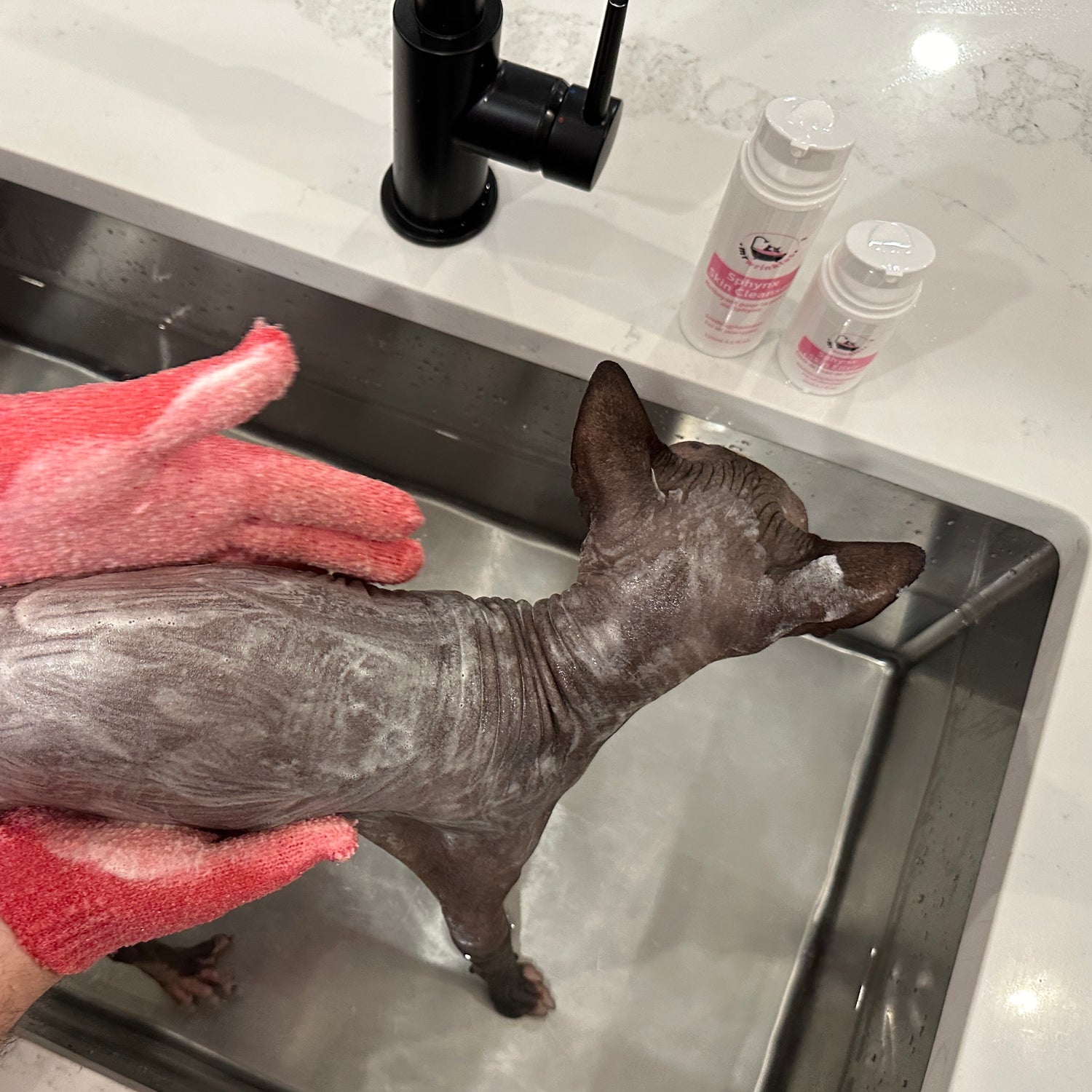
What is pH and does it really matter to hairless pets?
Share
What is pH?
It's very common to see skincare product labels stating they are "pH Balanced"; but what is pH and what does "balanced" mean?
pH is a figure expressing the acidity or alkalinity of solution on a scale from 0-14 where 7 is neutral and acidic solutions have a lower value than alkaline solutions. Almost everything that is a water based solution has a pH, including skin! For us humans our skin pH is around 5.5, cats are close to humans with a skin pH of 6.0, and dogs are more alkaline at about 7.5.
When a product claims to be pH balanced it means that the manufacture has formulated the product to a targeted pH close to the skins normal pH. For humans the generally accepted target is around 5.5. But what about pet grooming and skincare products? It's really hard to know because the industry isn't regulated. Sadly, in the eye's of the regulators, pet grooming products are lumped into the same categories as dish soap!
Even if a product claims to be pH balanced, what is the manufactures target; human, cat, or dog? What if the product claims to be balanced and is also labelled as safe for cats and dogs? Did they pick one or split the difference and meet in the middle? You just don't know.
Why does it matter?
Matching the pH level of skincare products to the pH of your pets skin ensures that the product is less likely to cause an imbalance in the natural microbiome of your pets skin. Their what?
Your pet’s skin microbiome is made up of microbes that can be helpful or harmful. When the balance shifts towards harmful microbes it can result in poor skin health.
For hairless pets skincare products this is even more important because grooming can be more frequent than pets with hair or fur and the products are in direct contact with the skin. Additionally, a lot of hairless pet products can have prolonged contact with the skin. Products such as water-less shampoos, cleansing wipes, and skin conditioners are not rinsed off during bathing. This means that an improperly balanced pH could have a greater chance to negatively impact your pet's skin pH.
The debate
There are many who strongly believe in the importance of pH balance in pet grooming products. However, there also skeptics. While pH balancing targets an average or ideal skin pH, in the real world a pet's skin pH can vary depending on countless internal and environment factors. Furthermore, in the world of pet haircare (shampoos and conditioners) there may be good reason to use a product that has a different pH than the skin. For example, a more acidic shampoo has been known to result in smooth and shiny hair because it tightens the hair cuticle.
Conclusion
At Mr Wrinkles, we agree that many things can impact your pet’s skin microbiome including genetics, diet, environment, and hygiene products. That's why, regardless of the debate, we err on the side of caution and pH balance our skincare product to match you pet's skin chemistry; specifically our cat skincare products are balanced to pH 6.0 and our dog products are balanced to pH 7.5. Afterall, with so many other things to worry about, your pet's skincare routine shouldn't be one of them!
![]()
![]()
Further reading
If you want to dive more into the subject here are some good places to start:
pH level of a dog's epidermis...Never use human products on pets!
Can you use dog shampoo on cats?
The Determination of the pH of the Skin of Man and Common Laboratory Animals

